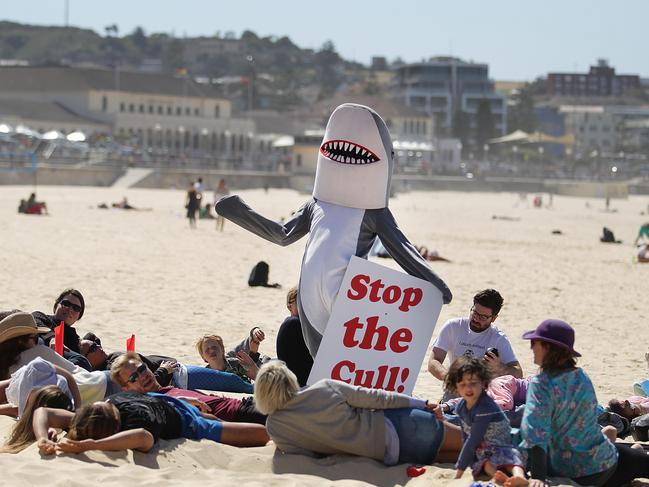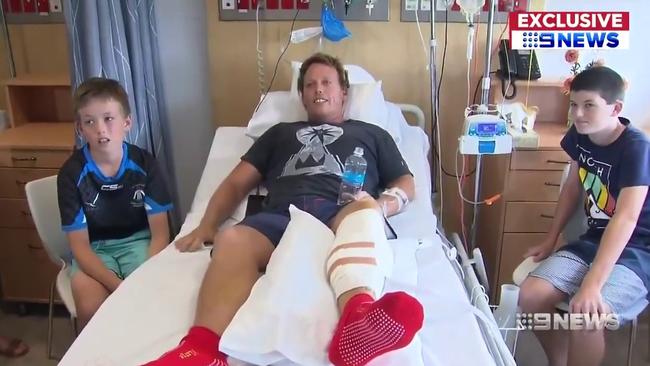People first, then sharks: Governments not doing enough to reduce further attacks
In the decade since shark attacks became an increasing national emergency, two things have become abundantly clear: the responses from governments do little to reduce further attacks, and the most fervent supporters of these measures seldom go in the water.
In the decade since shark attacks became an increasing national emergency, two things have become abundantly clear: the responses from governments do little to reduce further attacks, and the most fervent supporters of these measures seldom go in the water.
Environmentalists imagine themselves as warriors defending the “rights” of innocent creatures, but really they are just vainly supporting seemingly virtuous causes that cost them nothing personally.
A devotion to sharks ticks both of these boxes and more.
Man-eating sharks symbolise nature’s power over humans.

For some reason, this makes environmentalists feel good about themselves, presumably in a similar way to how ancient pagans felt after sacrificing virgins.
In 2014, Sydney University academic Christopher Pepin-Neff reported that people who wanted to reduce the number of sharks in the ocean suffered from the “Jaws effect”, where “film-based historical analogies are used as a political device to frame real-life events in ways that make the events governable and prejudice certain policy options”.

I’m no academic, but I think he means that people who disagree with him have been taught to fear sharks by a fictional movie set in the northeast of the United States in 1975.
The movie featured three cartoonishly unrealistic mechanical great whites, one of which was dubbed by the film’s director, a young Steven Spielberg, as the “great white turd”.
Curiously, the only people who bang on about Jaws’s legacy are those who claim not to be influenced by it.

The rest of us, especially those of us who regularly enjoy the ocean, are more concerned with explaining the increase in attacks and finding ways to prevent them.
If any side of this debate is confounded by fiction, it’s the side of the conservationists.
The recent events at Shelly Beach, Ballina, were another example.
Recently Lee Jonsson, 43, a father of two, was bitten on the leg while sitting on his surfboard 50m from shore. He fought it off and drove himself to hospital.
Judging by the teeth marks left in Jonsson’s leg, the shark was estimated to be a 2.6m great white.
RELATED NEWS
Lee Jonsson tells how he fought off great white shark
NSW government concedes it can’t guarantee safety from sharks

The next day, at almost exactly the same time, the NSW Department of Primary Industries caught a 2.88m great white on a drum line off the same beach, tagged it and released it.
Asked about this coincidence, the DPI was conspicuously sanguine, saying the tagged shark was a “different animal”, but declined to explain how this was known for sure.
“Once a shark is tagged, it is released approximately one kilometre offshore,” a spokeswoman said, speaking on condition of anonymity.
“Recent tracks from tagged sharks show that sharks usually head further offshore after release, minimising the threat of an interaction with water users.”
This simply isn’t true.
The DPI’s own research clearly shows that tagged sharks soon return to shore.
The spokeswoman might also like to reacquaint herself with the meaning of “minimise”: to reduce to the smallest possible amount.
If this was the DPI’s intention, then it would just destroy the animal. As far as a “threat of interaction” goes, non-existent is about as low as you can get.
This would be the policy of any government that prioritised human safety over that of animals.

The NSW government had installed nets at beaches near Ballina during the past two summers, but recently announced there would be no nets this season.
After these attacks Daniel Bucher, a marine biologist from nearby Southern Cross University, said “the netting trial demonstrated very clearly that they’re not very effective”.
This too is debatable, if not fictional.
Travel 90km north to the Gold Coast and you will find a stretch of coast, protected by the Queensland government’s nets and drum lines, that enjoys a perfect safety record.
Academics and environmentalists have for years twisted themselves in knots trying to explain that the absence of attacks has nothing to do with the shark management program, which is in place at all the state’s popular beaches.

Their tortured arguments are as fictional as the turgidly written Jaws novel, only less readable.
Three attacks have also occurred in Queensland at Cid Harbour, in the Whitsundays, during the past few months.
The first two were serious, the third fatal.
Cid Harbour is not part of the state’s management program. The nearest protected beaches are 100 kilometres away.
The state government’s response is not to install nets and drum lines at Cid Harbour. Rather, it is to call a summit of shark experts and local business owners, similar to former premier Mike Baird’s hopelessly ineffective summit in Sydney in 2015.
In calling the summit, Queensland Fisheries Minister Mark Furner said it was “vital that we take the advice of experts and focus on the science to inform our decisions”.
If previous advice from scientists is any guide, that is a sign that the Whitsundays is soon to become world famous for something far less pleasant this its glorious beaches.
Fred Pawle is a freelance surfing writer.



